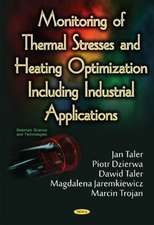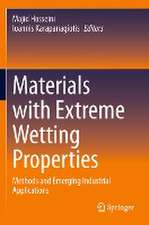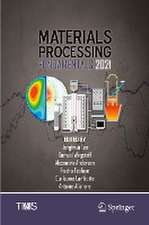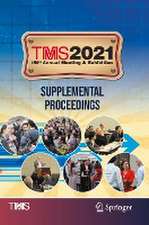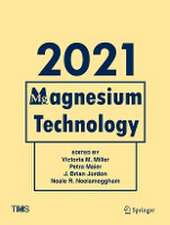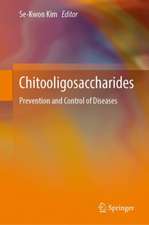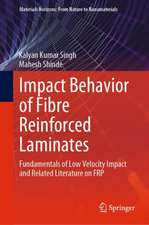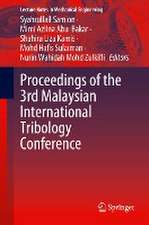Interfaces Between Nanomaterials and Microbes
Editat de Munishwar Nath Gupta, Sunil Kumar Khare, Rajeshwari Sinhaen Limba Engleză Paperback – 26 iun 2023
| Toate formatele și edițiile | Preț | Express |
|---|---|---|
| Paperback (1) | 331.15 lei 6-8 săpt. | |
| CRC Press – 26 iun 2023 | 331.15 lei 6-8 săpt. | |
| Hardback (1) | 1114.08 lei 6-8 săpt. | |
| CRC Press – 24 iun 2021 | 1114.08 lei 6-8 săpt. |
Preț: 331.15 lei
Preț vechi: 425.17 lei
-22% Nou
Puncte Express: 497
Preț estimativ în valută:
63.39€ • 68.87$ • 53.28£
63.39€ • 68.87$ • 53.28£
Carte tipărită la comandă
Livrare economică 21 aprilie-05 mai
Preluare comenzi: 021 569.72.76
Specificații
ISBN-13: 9780367703493
ISBN-10: 0367703491
Pagini: 300
Ilustrații: 68
Dimensiuni: 156 x 234 mm
Greutate: 0.52 kg
Ediția:1
Editura: CRC Press
Colecția CRC Press
Locul publicării:Boca Raton, United States
ISBN-10: 0367703491
Pagini: 300
Ilustrații: 68
Dimensiuni: 156 x 234 mm
Greutate: 0.52 kg
Ediția:1
Editura: CRC Press
Colecția CRC Press
Locul publicării:Boca Raton, United States
Cuprins
Introduction to the Microbial World. An Overview of Interactions between Microorganisms and Nanomaterials. Interactions of Metal-Containing Nanomaterials with Microorganisms. Challenges in the risk assessment of nanomaterial toxicity towards microbes. Nanocrystalline Cellulose (NCC) Composites with Antimicrobial Properties. TiO2 Nanoparticles and Composite Materials: Antimicrobial Activity, Antimicrobial Mechanism and Applications. Appraisal of organic and inorganic nanomaterials in cellular micro environment. Microbial Synthesis of Nanoparticles and Their Applications. Microbial Synthesis of Nanomaterials and Their Biotechnological Applications. Biosynthesis of Metallic Nanoparticles by Extremophiles and Their Applications. Synthesis and Biological Applications of Greener Nanoparticles. Liposomal Delivery: a Powerful Tool to Promote the Efficacy of Antimicrobial Agents.
Notă biografică
Munishwar Nath Gupta taught chemistry, biochemistry and biotechnology at IIT Delhi [1975-2018]. He received his PhD degree from the Indian Institute of Science, Bengaluru, and was a post-doc at University of Minnesota [USA], MIT [USA], Lund University [Sweden] and UTC [France]. He was a national science talent scholar and is a fellow of both National Academy of Sciences, Allahabad and Indian National Science Academy, New Delhi. He has > 300 publications with h-index of 57.
Sunil Kumar Khare is Dean (R&D) and Chair Professor of Biochemistry at IIT Delhi. He received Ph.D. in Biochemistry from IIT Delhi and Postdoc at NFRI, Japan. His research is focussed on Extremophiles, Extremozymes, Nanobiocatalysis, and Nanotoxicity. He has published >165 research papers and 20 chapters. He has been visiting faculty at Polytech Blaise Pascal, France, NCAUR Peoria, USA. He is fellow FRSC, FBRS, FNAAS, FAMSI, and serves as Associate Editor for 3 Biotech and Member for Frontiers Bioengineering Biotechnology and BMC Biotechnology.
Rajeshwari Sinha received PhD from IIT Delhi in 2015, where her work focused on bacterial toxicity and biocatalysis aspects of nanoparticles. She has since been working at the science-policy interface in the health space. As an independent researcher, she uses scientific training to synthesize knowledge and develop solutions on issues impacting human health. She has published her work in reputed journals, and also writes in media platforms. Dr. Sinha is also an alumna of IIM Calcutta.
Sunil Kumar Khare is Dean (R&D) and Chair Professor of Biochemistry at IIT Delhi. He received Ph.D. in Biochemistry from IIT Delhi and Postdoc at NFRI, Japan. His research is focussed on Extremophiles, Extremozymes, Nanobiocatalysis, and Nanotoxicity. He has published >165 research papers and 20 chapters. He has been visiting faculty at Polytech Blaise Pascal, France, NCAUR Peoria, USA. He is fellow FRSC, FBRS, FNAAS, FAMSI, and serves as Associate Editor for 3 Biotech and Member for Frontiers Bioengineering Biotechnology and BMC Biotechnology.
Rajeshwari Sinha received PhD from IIT Delhi in 2015, where her work focused on bacterial toxicity and biocatalysis aspects of nanoparticles. She has since been working at the science-policy interface in the health space. As an independent researcher, she uses scientific training to synthesize knowledge and develop solutions on issues impacting human health. She has published her work in reputed journals, and also writes in media platforms. Dr. Sinha is also an alumna of IIM Calcutta.
Descriere
Nanomaterials are becoming ubiquitous; microbes similarly are everywhere. This book focuses on various ways the diverse nanomaterials interact with microbial communities and implications of such interactions.




